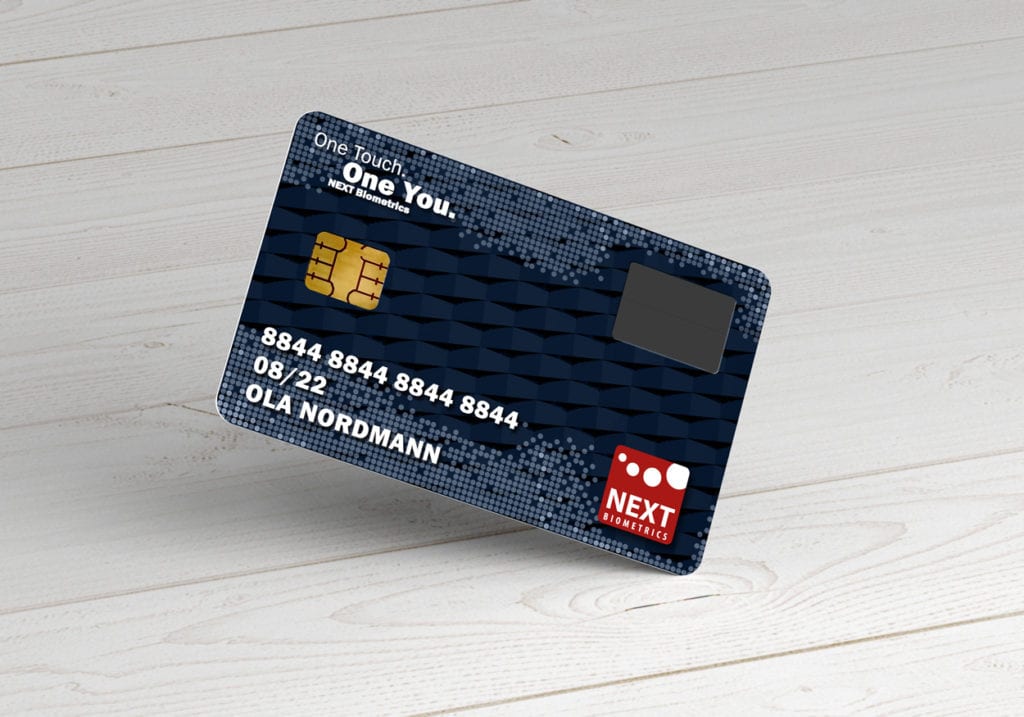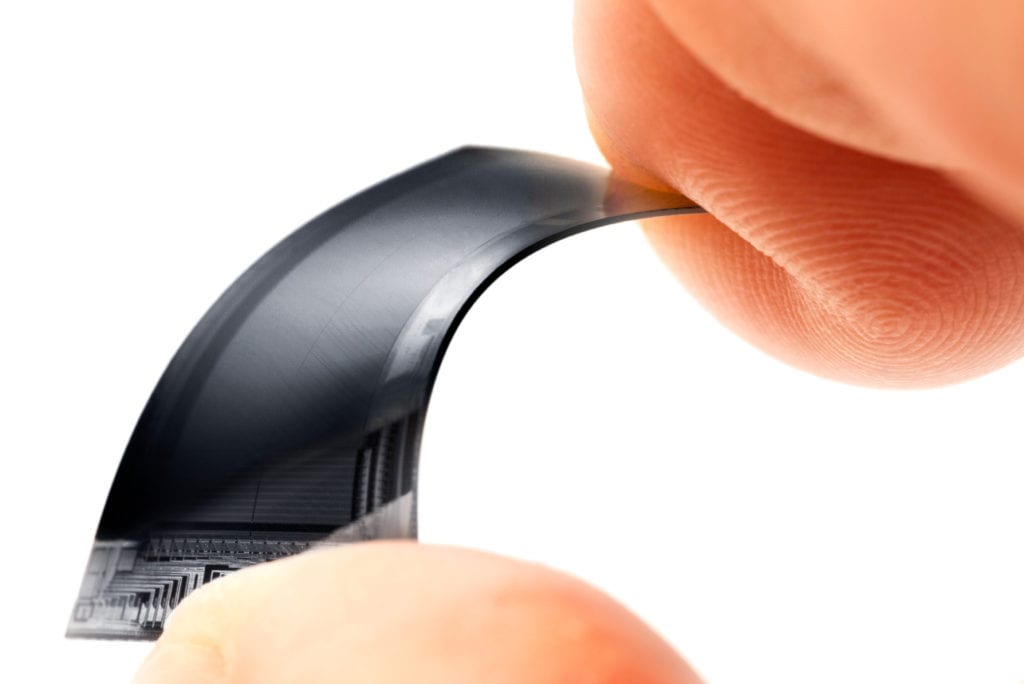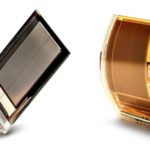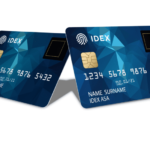
With all the excitement currently swirling around biometric payment cards, NEXT Biometrics‘ activities in this area have received a significant share of the spotlight in recent months. The company has established itself as a major player, with recently announced partnerships with a major US payment network and ABCorp offering the latest examples of NEXT’s prominence.
So it’s no wonder that this proved to be a key topic of discussion in a recent interview between FindBiometrics Director of Digital Content Susan Stover and NEXT Biometrics’ Chief Sales and Marketing Officer, Alain Faburel. But, as Alain pointed out in the discussion, NEXT Biometrics isn’t solely focused on biometric payment cards. The company is also highly active in the areas of government ID, access control, and the burgeoning biometrics market in India. Read on to learn what one of the world’s notable biometrics specialists has been up to in all of these areas.
Read our full interview with Alain Faburel, Chief Sales and Marketing Officer, NEXT Biometrics:
Susan Stover, Director of Digital Content, FindBiometrics: The biometric smart card market is developing at a rapid pace in 2019, solidifying itself as one of the biometric industry’s top trends, which we have been covering here at FindBiometrics.
What major milestones has NEXT achieved in the smart card market this year?
Alain Faburel, Chief Sales and Marketing Officer, NEXT Biometrics: Well, first of all, the biometric smart card market can be divided into a few verticals. One is payment, secure authentication is another one, and government ID biometric smart cards a third one. If we look at the payment vertical, we have seen some pilot programs in the past months and past year. The reality is that we have not yet seen – and I’m not talking about NEXT Biometrics, I’m talking about the market in general –a massive ramp-up, a massive deployment of biometric smart cards for payment.
We are confident that this is coming. But this is not the case in 2019. The reality is that there were a lot of pilots in payment but one of the biggest deployments was outside of the payment vertical; I will come back to this.
With regard to the question what NEXT has achieved in the past few months, we have been very active. As you know, we are addressing four market segments, which are the notebook, government ID, access control, and smart card segments. In the smart card market, we signed agreements with some of the leading players in individual countries. For example, M-Tech in India, WizCard in Taiwan, MK Group in Vietnam, and ABCorp in the U.S. We’ve also announced that we are working with a payment network writing their biometric system-on-card specifications and helping them implementing the route to market. So, we have been very active since the beginning of the year.

FB: For the government programs, we caught up with you at ID4Africa in Johannesburg, so there are a lot of really exciting things going on for NEXT right now.
Specifically, to just talk about payments, when do you expect to see large-scale commercial deployment of biometric payment cards featuring NEXT Biometrics sensors?
NEXT Biometrics: We see a potential ramp-up by the end of 2020. This is for pure payment with the goal to replace PIN codes with biometric authentication. Between now and then we’re going to continue to see some pilots.
In a banking environment, to move from a first pilot to mass deployment involves several phases. The first pilot is going to be what we used to call “friends and family,” which is basically employees of a financial institution testing the technology. Then there will be a “phase one” in which specific customers interested in this kind of product will be selected. Millennials, for instance, are a customer type who are tech-savvy and interested in this type of technology. Other potential customer categories are VIP, or frequent travelers who are likely to use this kind of technology because it improves the security. In sum, ‘phase one’ comprises real end customers of the financial institution which will test the technology and provide an indication for customer acceptance over a period of a few months. Only after this step has been concluded successfully, there will be some ramp-up.
All of this is going to take another 18 months before we will see some significant ramp-up in the market, and of course this ramp-up will involve NEXT Biometrics sensors. Today, if you take a look at the market outside of payment, NEXT Biometrics has sold more than 30,000 sensors to one of our customers, and this is one of the biggest, if not the biggest deployment of sensors integrated into a biometric smart card.
FB: Well, congratulations! That’s such a huge feat for NEXT Biometrics, and in the sensor market in general. Speaking of your sensors, FindBiometrics recently reported on your latest white paper, the “Fingerprint Sensor Technology for Safe and Convenient Card Payments.”
Among the key points in this white paper, is an emphasis on the size of NEXT’s fingerprint sensor, bigger being better. Why are large area fingerprint sensors ideal for biometric payment cards?
NEXT Biometrics: It’s quite easy, in fact there is a lot of technical literature and research available substantiating that sensor size matters. To put it simple: the larger your sensor, the better is the quality of the fingerprint capture going to be. With a large sensor, you can achieve a one-touch user enrollment. What`s more, you can also reliably and conveniently make a transaction with one single touch. This is not possible with a small sensor. Whatever the technology is, a smaller sensor can only capture a smaller area of the fingerprint which has an impact on reliability and convenience. And the beauty of the NEXT Biometrics technology is that the size of the sensor has no impact on cost.
We are able to offer a good match between large sensor size and cost effectiveness, which is besides reliability and convenience of the solution another important aspect for customers. There are other technologies on the market where the price increases with the size of the sensor. Obviously, this is not going to fly, because we are at the beginning of the market adoption curve and each smart card industrial company in the world is looking for a secure, robust, cost-effective solution which is offering themselves and their customers added value.
Regardless of their size, take the top three global leaders or a national smart card supplier, they all want to increase their sales revenues and keep their margins stable, which is a challenge in a highly saturated market. The payment industry is also looking for higher security through biometrics, some more than others, because this is giving the consumer, you and me, a higher level of confidence since biometric smart cards are much more secure to use than traditional smart cards. So, globally the ecosystem is favorable towards the adoption of fingerprint sensor technology. But, this technology is only going to be adopted if the cost is affordable.
As mentioned before, the NEXT Biometrics technology is based on a very robust, very secure, and very efficient sensor and the price ratio is not tied to the size of the sensor. As such, we are able to offer the industry an affordable solution.

FB: The white paper I mentioned also has this strong emphasis on customer experience with a really relatable example involving holiday shopping and frustration and convenience, which I really enjoyed. So, in today’s omnichannel payments landscape, what does it take to set biometric cards apart from competing payment options, like mobile wallets for example?
NEXT Biometrics: Well, in general it’s a different use case. I do not think that mobile wallets are going to replace traditional plastic cards, and likewise plastic cards are not going to prevent new payment means like mobile wallets. From a branding perspective, smart cards are a great means for financial institutions to interact with their end customers. This is why financial institutions place great emphasis on stylistic and branding aspects like logo and brand name. I have been in this industry for more than 25 years, and I can tell you that I have spent a big part of my time working with banks on understanding where and which kind of logo they need to have on the smart card. All payment schemes, be it Visa, MasterCard or others, are extremely sensitive to where and how their logos and brand names are placed.
It is their number one communication and one-to-one marketing tool with their end customer, and they are not going to skip this. It is much more difficult to create and activate the same emotional bond with a digital payment means like a mobile wallet. Digital payment means are offering a different value in a different scenario and are thus supplementary to credit cards.
Image and convenience of the credit card are important aspects for consumers. This is why consumers are willing to pay annual fees for certain types of credit cards. Typically, you have your preferred card and it`s always on top of your wallet. Biometric smart cards are capable of becoming top of the wallet, too, because they are new, convenient, secure and can be associated with the same strong image of the preferred financial institution or payment network. This has a lot to do with perception, and you will see that the plastic banking card is not dead. It’s going to last for a long time to come!
FB: One of the biggest challenges in biometric smart cards from a user-experience standpoint, is customer enrollment. So, what’s unique about NEXT’s enrollment process?
NEXT Biometrics: With our large sensor and the proprietary NEXT Biometrics technology, you can enroll your fingerprint with one single touch of the sensor – that`s why we call it “one-touch enrollment” – instead of a cumbersome process where you have to touch the sensor again and again and again. Also, you don`t have to have any technology skills for a seamless enrollment experience since our solution offers 360-degree capability and will reliably enroll your finger regardless of the fingers position on the sensor. It’s so easy and fast!
You have to keep in mind that financial institutions are going to send the card by mail to their customers, because less and less banking customers are visiting physical branches. Customers will enroll their fingerprint themselves at home by means of an application on the laptop, tablet, or smartphone. People will be doing this on their sofa and you want them to have the best possible experience right from the start. And it is convenient and positive if you can enroll in a few seconds overall time from the moment you open the application to the moment your finger is enrolled, and you close the application, and all is done and you`re all set!
This is the beauty of our technology. You don’t need to put your finger ten times on the sensor. It works!
FB: So it’s an easy experience for the customer.
NEXT Biometrics: And moreover, this is not only true for the enrollment. It´s the same fast, reliable and convenient experience at the time you do a transaction. This goes back to the example of holiday shopping which you mentioned earlier. After all, it`s the introduction of a new technology and this will not be successful if the industry tries to introduce devices that are not going to be convenient.
The NEXT Biometrics sensor technology is convenient because it works, you can rely on it and don`t need a PIN code as fallback option.
FB: That’s amazing. So, just one final question, what’s next for NEXT? Specifically, what are your goals for the rest of 2019?
NEXT Biometrics: NEXT Biometrics is an interesting company and we have a very solid business model. We are not only relying on the smart card business. We are active in four different verticals, as mentioned earlier. We are extremely strong in the government ID sector and we are further expanding our footprint in India in this sector. We will launch new products for the Indian market and we are also addressing the global government ID market with the introduction of our new FAP20 product. We are in discussion with a very well-known company to test the new product and we are confident that we will be able to report some positive news in a couple of weeks.
We will also launch two new products to the access control market segment. At the same time, we are busy with the commercialization of our dual interface solution for the smart card segment. Our roadmap is solid, and we are continuing to expand our network of ecosystem partners in the smart card sector with semiconductor companies and smart card manufacturers in selected countries that we want to address.
I believe that the focus on four dedicated market segments is a real asset for NEXT Biometrics, because we can cross-link the experiences we gain in the different market segments. To give you an example: the certification that we have obtained in India, one of the most difficult markets, is an excellent demonstration of our technological capabilities. Many business partners recognize this certification and the knowledge we have gained through this strict and lengthy process. The certification process has also had positive effects on the further development of our underlying technologies and helped to create a robust and really efficient product that is very well suited to also address the smart card industry.
FB: Absolutely! Well, we’re really looking forward to reporting on all that news. It sounds like you’re doing so many interesting things. So thank you so much for joining me today.
NEXT Biometrics: Thank you, Susan!





![INTERVIEW: Fingerprint Cards SVP Thomas Rex Talks Biometric Cards at Money20/20 Europe [AUDIO]](https://idtechwire.com/wp-content/uploads/M2020EU18-FPC-Thomas-Rex-2-150x150.jpg)
![INTERVIEW: Precise Biometrics’ Fredrik Sjoholm at Money20/20 Europe [AUDIO]](https://idtechwire.com/wp-content/uploads/HiRes6-150x150.jpg)
![INTERVIEW: IDEX CFO Henrik Knudtzon at Money20/20 Europe [AUDIO]](https://idtechwire.com/wp-content/uploads/M2020EU18-IDEX-e1528303020466-150x150.jpg)
Follow Us